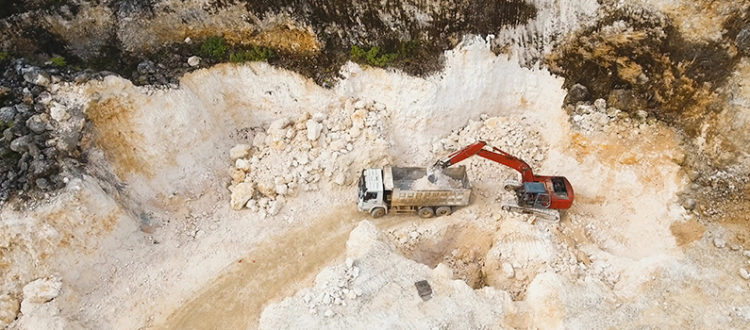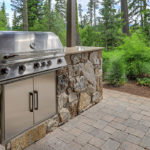Where Is Limestone Found?
Where Is Limestone Found?
When it comes to redoing your home with the addition of a custom natural stone home feature, limestone is often the building material of choice. Homeowners adore it for its durability, affordability, and incredible, diverse patterning. While a popular choice, limestone quarries are actually quite difficult to create. In the US, permits for a new clement plant or limestone quarry can take upwards of 8–10 years, and that timeline doesn’t even touch the quarrying process itself. To procure limestone, explosives and drilling machines are used to go under the earth’s surface and bring out slabs of rock. Wondering where this magnificent material comes from? Let’s find out!
What Is Limestone?
In order to properly understand limestone’s many locations across the globe, you have to first understand how it’s made. There are considered two methods by which limestone is created: marine creation and evaporative creation. No matter its creation process, limestone is defined by the presence of particular minerals. It must be 50% calcium carbonate by weight, in the form of calcite. Limestone may also contain other materials, like particles of quartz, feldspar, clay, and more. The presence of these additions is what gives limestone its unique colors and patterns, and which minerals are in limestone depends on where it is sourced from.
Marine Limestone
Marine limestone is limestone that is formed in shallow, calm, warm marine waters. These environments are ideal for organisms like corals, clams, and other marine life with hard, protective shells. These animals and plants extract ingredients from marine water to create their calcium carbonate shells. When they die, the shell and skeleton turn to sediment along the ocean floor. Over time, this sediment may turn into stone if presented with the proper pressure and heat conditions.
Evaporative Limestone
Evaporative limestone is formed via evaporation, often found as stalactites, stalagmites, and cave formations. For stalactites, droplets of water seep from above the cave using fractures or pores in the cave ceiling. Some of the water evaporates before it hits the cave floor, leaving behind its calcium carbonate molecules on the ceiling alongside any other minerals it is carrying. These particles will accumulate over time on the cave ceilings to form stalactites. If water instead falls to the floor, minerals accumulate over time to “grow” upwards in the form of stalagmites.
Where Is Limestone Found?
Now that we understand the two types of limestone formation, let’s see where you can find each.
Marine Limestone
Marine limestone can be found in shallow water areas either 30 degrees north of or south of the equator. This includes the Indian Ocean, Caribbean Sea, Persian Gulf, Gulf of Mexico, water around the Pacific Ocean islands, and water within the Indonesian archipelago. One of the biggest marine sources of limestone is the Bahamas Platform in the Atlantic Ocean, where many corals, shellfish, algae, and more add to calcium carbonate skeletal debris and deposits. Any countries that sit along these bodies of water are likely to produce limestone either regionally or globally.
Evaporative Limestone
Evaporative limestone is considered non-marine, but that doesn’t mean non-water! Evaporative limestone is often found in bodies of standing water, like lakes. These spaces often have underwater segments and caves, where water drains to create evaporative limestone. The Cradle of Humankind in South Africa is the biggest example, with 180 square miles of limestone caves. The United States also has a lot of limestone caves, with some more than 350 million years old. They’re typically found in the central and eastern United States, and filled with what’s considered very pure limestone, at up to 95% CaCO3. States with the most limestone include West Virginia, Michigan, and Utah. Evaporative limestone is often frequently found in England and northwestern European countries like Belgium and the Netherlands.
Source Your Limestone From Impression
As a natural resource with a low carbon footprint, limestone is a great material for your next home feature project. It has incredible durability that will last for generations and is entirely natural — therefore it is often considered a green resource. At Impression, our limestone is sourced from reputable quarry sites with top-quality stone, and we always choose locally-sourced limestone when possible. For your next home project, contact our team today! Our artisans have decades of experience, and our showroom of plentiful limestone colors and designs will give you all of the variety you could ever need.
















